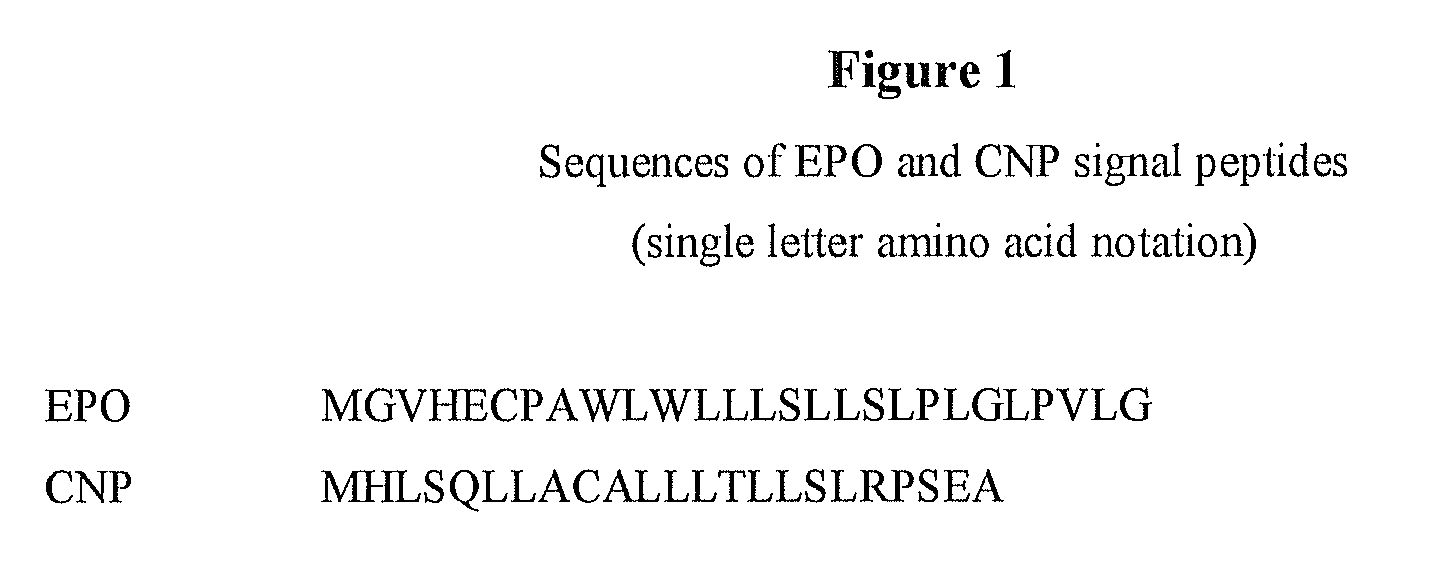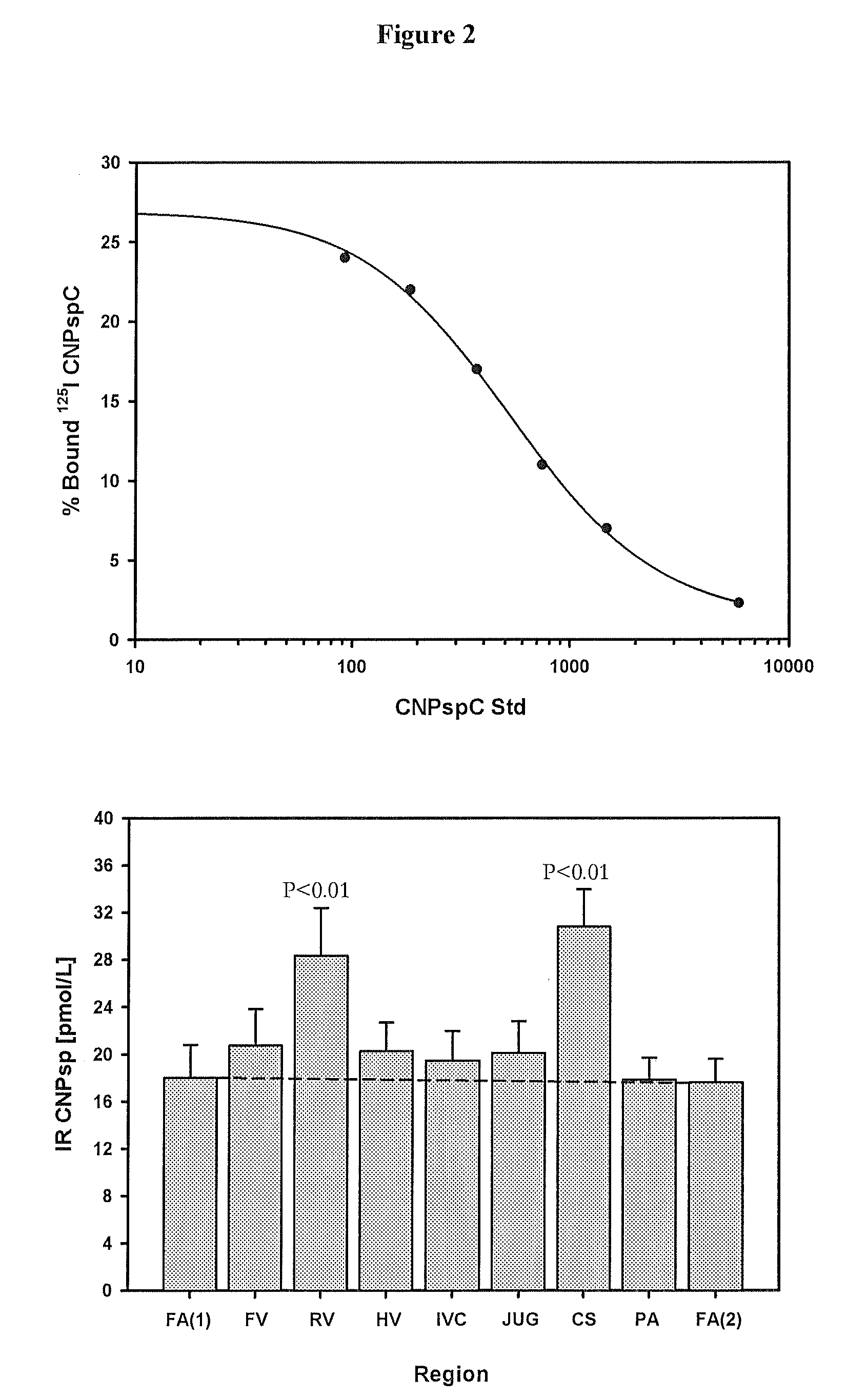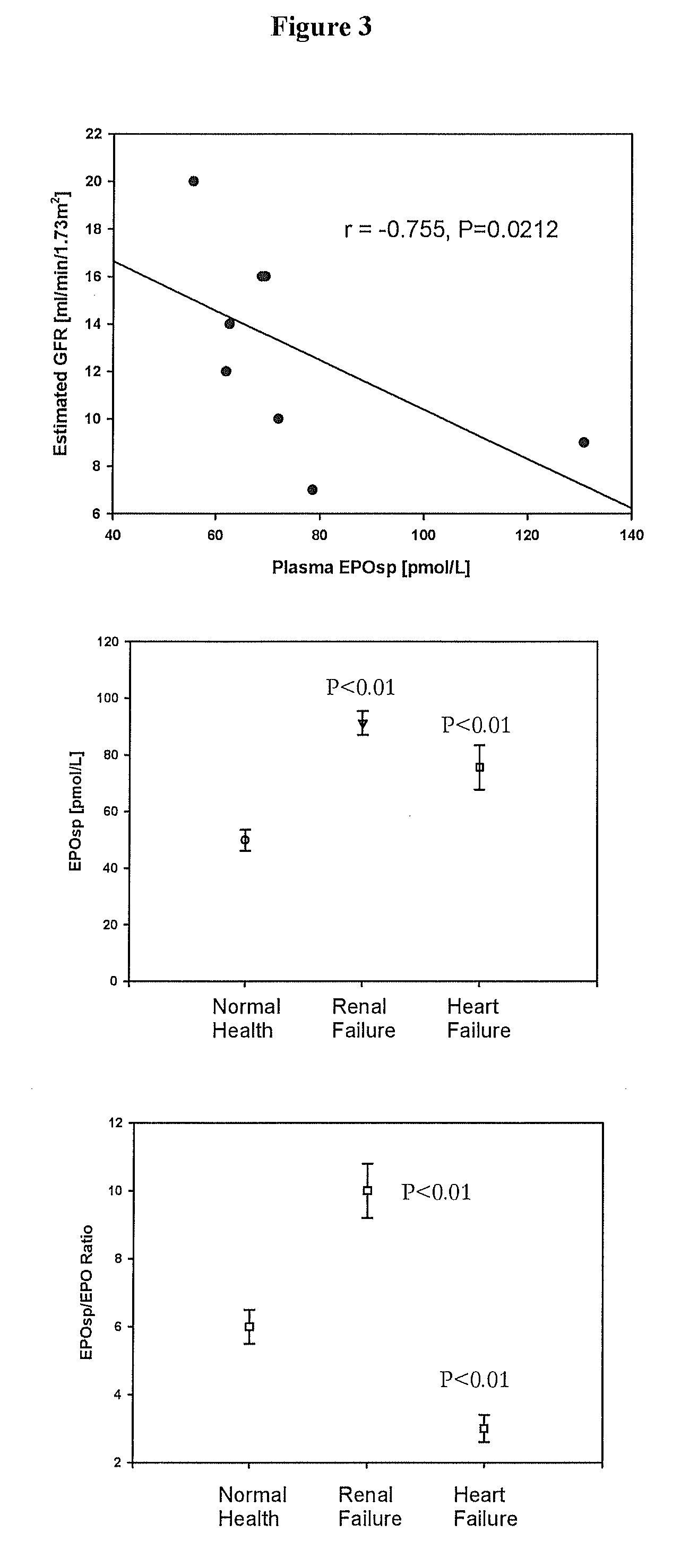Signal biomarkers
a biomarker and signal technology, applied in the field of diagnostics, can solve the problems of long half life and cannot be said of existing markers, and achieve the effects of shortening the half life of blood, accelerating detection and discrimination, and accelerating the time to reach peak levels in blood
- Summary
- Abstract
- Description
- Claims
- Application Information
AI Technical Summary
Benefits of technology
Problems solved by technology
Method used
Image
Examples
example 1
Methods
[0192]All human protocols were approved by the Upper South Regional Ethics Committee of the Ministry of Health, New Zealand and were performed in accord with the Declaration of Helsinki
Chemicals
[0193]Synthetic human signal peptide fragments corresponding to EPOsp and CNPsp were synthesised using a mild Fmoc Solid Phase Synthesis method.4,9 All buffer reagents were purchased from BDH® (UK) and / or Sigma (Mo, USA). EPOsp(1-9) and CNPsp(14-23) were all synthesised with an extended cysteine (C- or N-terminus) for directional carrier coupling. EPOsp(1-9) and CNPsp(14-23), tyrosyl-containing peptides were also synthesised for tracer preparation.
Human Studies
[0194]Non-fasting blood samples were collected from the following groups of patients presenting at Christchurch Hospital, New Zealand:[0195]1) 55 normal, healthy volunteers. Samples were collected into EDTA blood tubes, centrifuged and the plasma stored at −80° C. until analysis.[0196]2) 10 patients with acutely decompensated hea...
example 2
[0209]Eight patients with clinically stable suspected ACS were catheterized and blood samples from multiple organ sites: these were the femoral artery FA(1) and FA(2) femoral vein (FV), renal vein (RV), hepatic vein (HV), inferior vena cava (IVC), jugular (JUG), cardiac coronary sinus vein (CS) and pulmonary artery (PA). Blood was collected into chilled EDTA tubes, prepared from plasma by centrifugation and the plasma submitted to immunoreactive EPOsp and CNPsp RIAs. FIG. 2 clearly shows that the highest site of immunoreactive CNPsp concentration is the CS, the vein draining the heart, especially the ventricles. This is evidence that the heart can secrete immunoreactive CNPsp (e.g., CNPsp fragments). Immunoreactive EPOsp, particularly in the form of EPOsp fragments, can also be secreted.
example 3
[0210]Plasma extracts from 10 patients with acute decompensated heart failure and 75 patients with chronic renal failure were subjected to specific EPOsp and EPO immunoassay. Top panel: estimated glomerular filtration rate (eGFR) in 10 patients with chronic renal failure. There was a statistically significant negative relationship between eGFR and plasma EPOsp. Middle panel: Plasma EPOsp concentrations in normal healthy individuals, patients with chronic renal failure and in patients with decompensated acute heart failure. Plasma concentrations of EPOsp are significantly elevated in patients with chronic renal failure and heart failure. Lower panel: the ratio of EPOsp / EPO in normal health, chronic renal failure and acute heart failure. The ratio in normal health is approximately 6:1, whereas in chronic renal failure the ratio increases significantly (compared with normals) to approximately 10:1. In contrast, in acute heart failure, the ratio of EPOsp to EPO is significantly reduced ...
PUM
| Property | Measurement | Unit |
|---|---|---|
| pH | aaaaa | aaaaa |
| mass spectroscopy | aaaaa | aaaaa |
| size | aaaaa | aaaaa |
Abstract
Description
Claims
Application Information
 Login to View More
Login to View More - R&D
- Intellectual Property
- Life Sciences
- Materials
- Tech Scout
- Unparalleled Data Quality
- Higher Quality Content
- 60% Fewer Hallucinations
Browse by: Latest US Patents, China's latest patents, Technical Efficacy Thesaurus, Application Domain, Technology Topic, Popular Technical Reports.
© 2025 PatSnap. All rights reserved.Legal|Privacy policy|Modern Slavery Act Transparency Statement|Sitemap|About US| Contact US: help@patsnap.com



